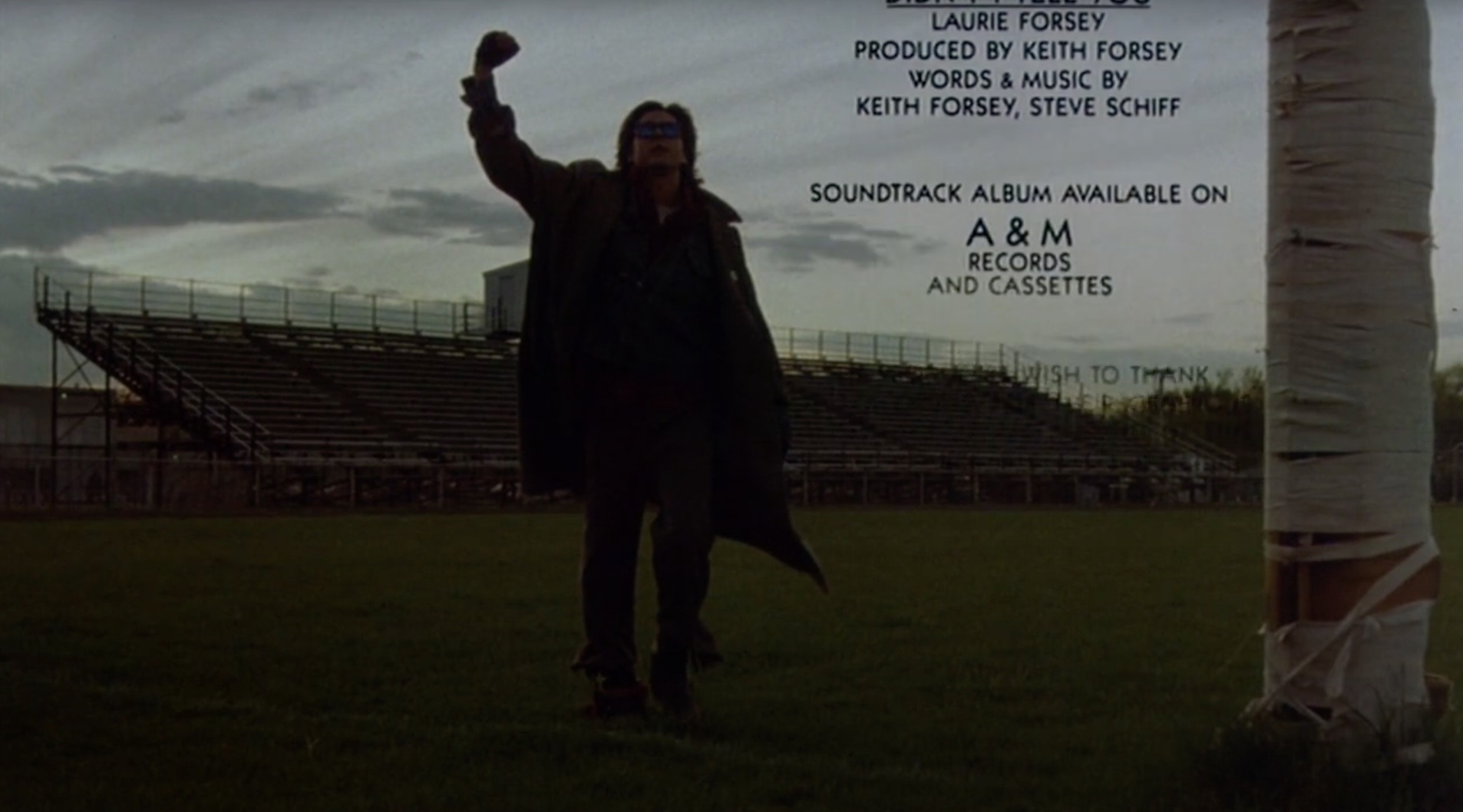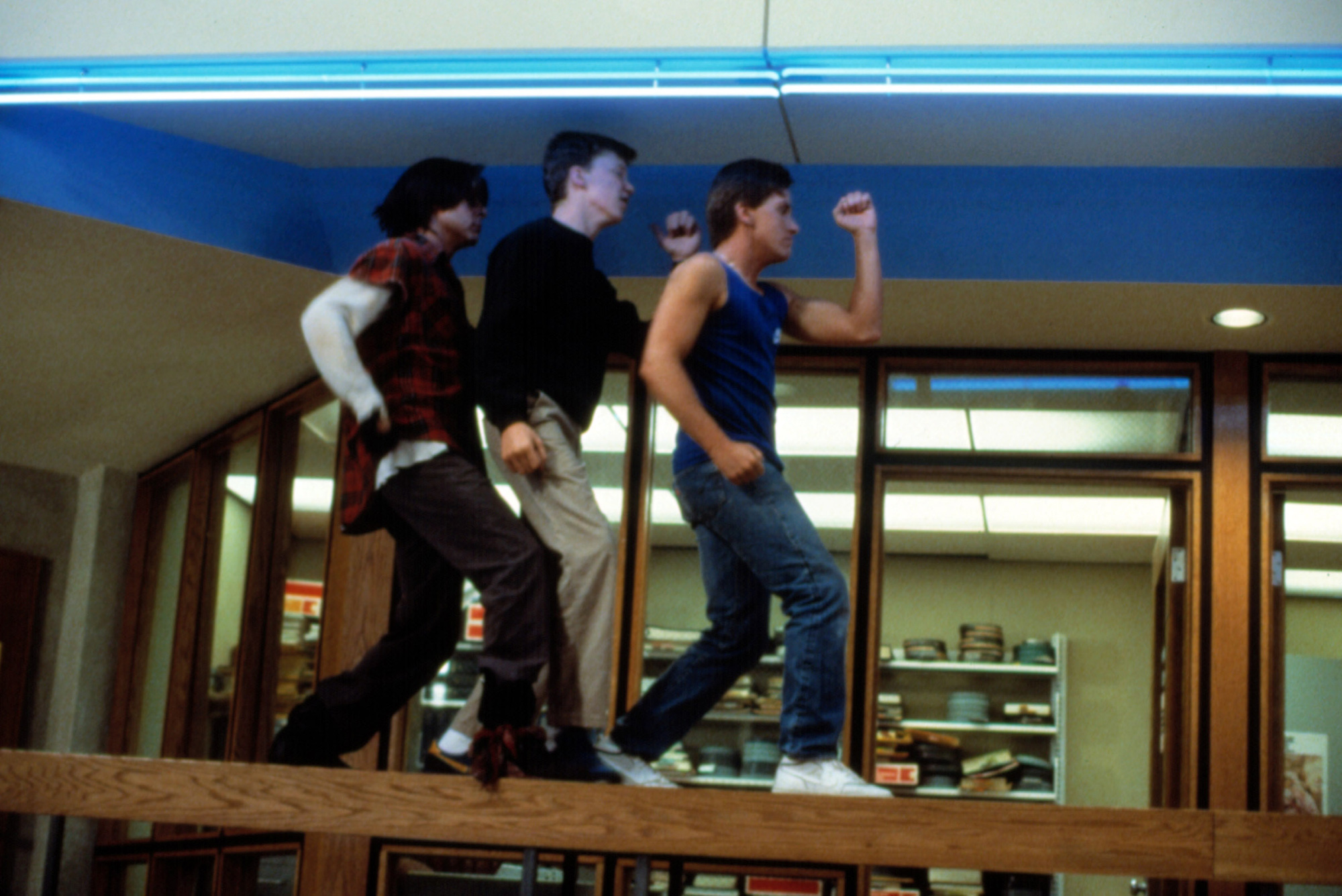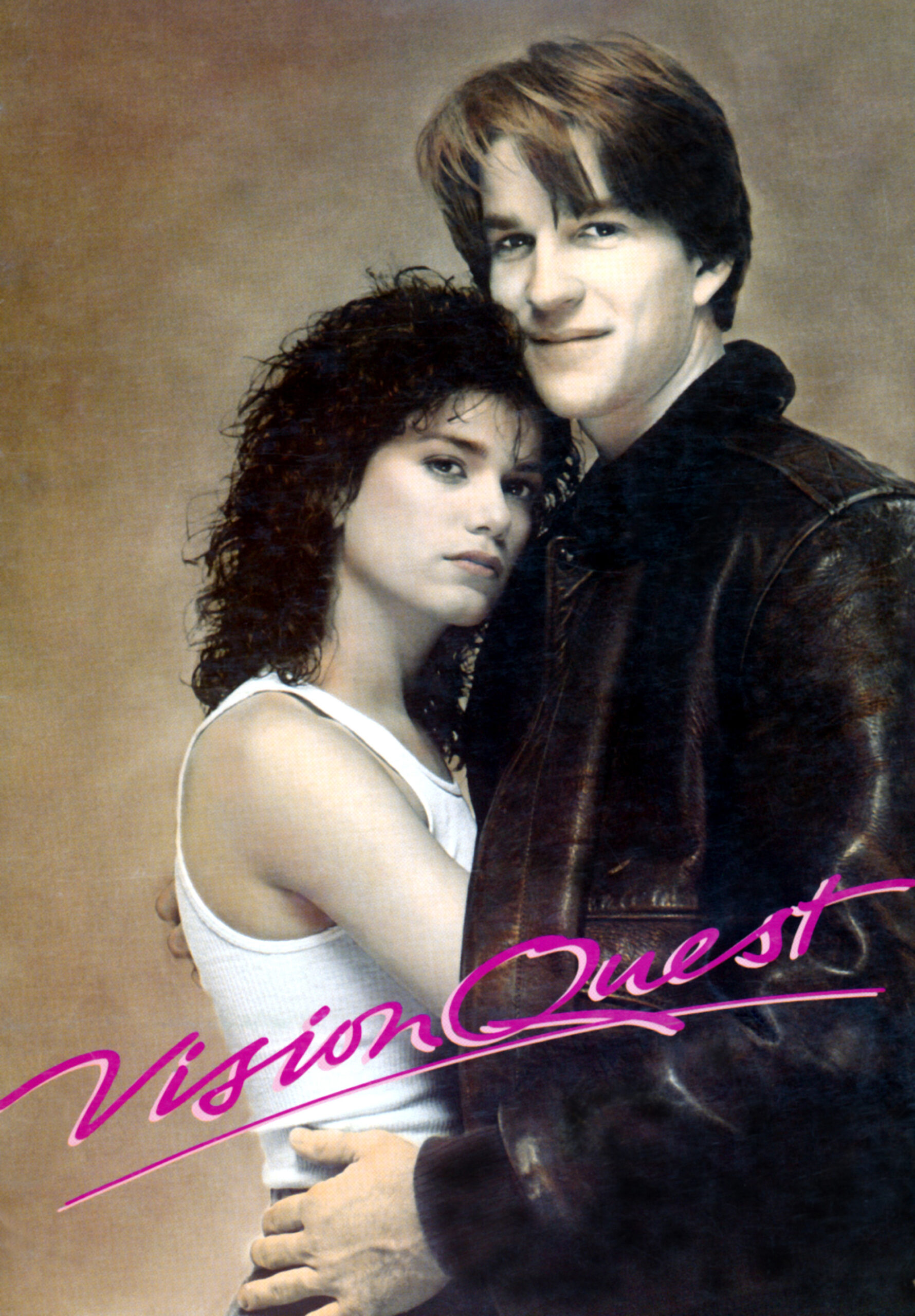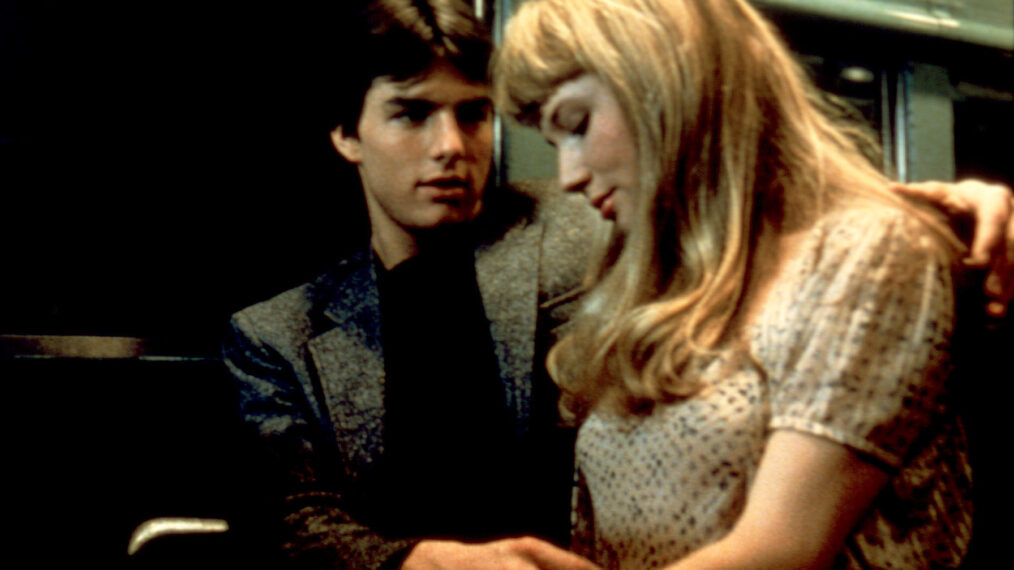‘The Breakfast Club’ vs. ‘Vision Quest’: Which February 1985 Movie Soundtrack Is the Most Awesome?

On Feb. 15, 1985, The Breakfast Club and Vision Club opened in theaters. Both were accompanied by soundtracks that were released during that week, soundtracks that each featured at least one iconic tune that has remained relevant and listenable over the past 40 years.
These soundtracks also have other interesting tracks that, in at least a few cases, are worth taking a deeper dive into the albums if you haven’t before.
THE BREAKFAST CLUB
Film opened Feb. 15, 1985; soundtrack released Feb. 19, 1985, on A&M Records and Cassettes

© MCMLXXXV by Universal City Studios, Inc. All Rights Reserved./Screenshot from youtube.com/@the80strailerchannel93
Writer/director John Hughes’ teen comedy/drama The Breakfast Club, of course, starred Emilio Estevez, Anthony Michael Hall, Judd Nelson, Molly Ringwald and Ally Sheedy.
But I have to start my look at The Breakfast Club by making a confession that may get me excommunicated from Generation X. I don’t care; it must be said: Aside from their soundtracks, I really don’t much care for the teen movies that Hughes made in the ‘80s.
Although I was the target age range during the span when the brunt of these films were first released — between age 14 and 17 — I just could not get into their stories and characters, and I never went crazy for any of the Brat Packers who led most of the titles. Looking back now, not even nostalgia can get me to care too much about these films’ plots and the people in them.
Now, the soundtracks to those John Hughes films, that’s another story.
I enjoyed a good number of those plenty at the time, and still do, including the one for The Breakfast Club (to an extant).
The Breakfast Club Soundtrack Album Track Listing
SIDE ONE
“Don’t You (Forget About Me)” — Simple Minds
“Waiting” — Elizabeth Daily
“Fire in the Twilight” — Wang Chung
“I’m the Dude” — Keith Forsey
“Heart Too Hot to Hold” — Jesse Johnson & Stephanie Spruill

© Universal Pictures/Courtesy Everett Collection
SIDE TWO
“Dream Montage” — Gary Chang
“We Are Not Alone” — Karla DeVito
“The Reggae” — Keith Forsey
“Didn’t I Tell You” — Joyce Kennedy
“Love Theme” — Keith Forsey
To me, if The Breakfast Club — like so many other Hughes movies of that era — succeeds and remains memorable in any way, it’s because of its music, especially, of course, Simple Minds’ hit “Don’t You (Forget About Me),” which opens the film and also sends us off as Nelson’s character triumphantly pumps his fist at the end. (Can anyone of a certain age hear that tune and not think of The Breakfast Club?)
As it did the film, “Don’t You (Forget About Me)” also leads off The Breakfast Club soundtrack album. The song was No. 1 on Billboard’s Hot 100 the week of May 18, 1985; it was No. 16 on the Hot 100 year-end chart.
Looking back at the other tracks from this film, though, none of them are as enduring, and many are, frankly, forgettable, even if they are by some artists I normally like. They are not bad, necessarily, just kind of there.
Probably the most successful tune off the soundtrack after Simple Minds’ No. 1 hit was Wang Chung’s “Fire in the Twilight,” which I believe just cracked into the tail end of Billboard’s Hot 100 chart at the time. Kind of a cool video for it, too.
Beyond that, I would challenge people to name other tracks from The Breakfast Club without looking.
While the scene in the film when the detention-sentenced kids start dancing in the library is among its most remembered, I think it’s unlikely many would recall the name of the music to which they danced.
That dance scene begins when Estevez’s jock character begins cutting loose to “I’m the Dude,” an instrumental track by Keith Forsey, who also produced the soundtrack album (and cowrote “Don’t You (Forget About Me).” Following that, as the rest of the youngsters begin dancing, we hear “We Are Not Alone,” performed by Karla DeVito.
And here are a couple of the other tracks. Any of them ring a bell?
Ultimately, I have to agree with a critic named Stephen Thomas, who in a 2017 retrospective review of The Breakfast Club’s soundtrack for AllMusic wrote that apart from Simple Minds’ “undisputed masterpiece,” the rest of the soundtrack was “disposable.”
Still, in 1985 it peaked at No. 17 on the Billboard 200; not too bad, but I’m guessing a lot of sales were from people looking for “Don’t You (Forget About Me)” if they hadn’t gotten the single, or who thought they had remembered the other songs in the movie being as good. (Remember the days when you had to buy a whole album just to get one song you might have been looking for?)
VISION QUEST
Film opened Feb. 15, 1985; soundtrack released Feb. 12, 1985, by Geffen Records

© Warner Bros./Courtesy Everett Collection
The Breakfast Club was the 13th highest-grossing film of 1985, taking in just under $45.9 million.
Vision Quest, which opened the same day, grossed considerably less, just under $13 million, to come in at No. 72 for the year.
Both films were rated R, so that wasn’t the problem. It was more likely that The Breakfast Club had more recognizable Brat Pack stars.
By comparison, Vision Quest was led by Matthew Modine, who may have been a sort-of familiar face from his work in the previous couple of years, at least, if not as much of a name yet among the youngsters as the Brat Pack crew. Even less known at the time was his costar, Linda Fiorentino, who made her feature film debut in the romantic sports drama.
I may not have known Fiorentino’s name when I first saw Vision Quest on HBO sometime in 1986 or so, when I was 16, but I still have a recollection of her being in what I believe was the first fully nude female scene I ever saw in a movie (it was either her or that sexy lady space vampire from Tobe Hooper’s 1985 sci-fi/horror film Lifeforce, which I also caught on HBO around the same time).
So that’s one reason why Vision Quest has a special place in my heart.
While it is perhaps not as enduring in popular culture or as quotable as The Breakfast Club, Vision Quest is still enjoyable for reasons beyond the nudity, notably its soundtrack, which I think is better, and has remained more impactful, to me, anyway, than the Breakfast Club soundtrack.
Vision Quest Soundtrack Album Track Listing
SIDE ONE
“Only the Young” — Journey
“Change” — John Waite
“Shout to the Top” — The Style Council
“Gambler” — Madonna
“She’s on the Zoom” — Don Henley
SIDE TWO
“Hungry for Heaven” — Dio
“Lunatic Fringe” — Red Rider
“I’ll Fall in Love Again” — Sammy Hagar
“Hot Blooded” — Foreigner
“Crazy for You” — Madonna
(A couple of notable songs that appear in the movie were not included on the soundtrack album: Quarterflash’s “Harden My Heart,” “No More Words” by Berlin and “Time for Me to Fly” by REO Speedwagon.)
This soundtrack’s highlights for me, and probably for a lot of people, are the two Madonna tracks — the catchy and rockin’ “Gambler” and the more well-known ballad “Crazy for You.”
Madonna herself (billed in Vision Quest’s end credits as “Singer at Club”) performs at least portions of each during a scene at a club where Modine and Fiorentino’s characters share a dance.
For some legal reasons, I guess, “Gambler” was not commercially released or sent for airplay in the U.S. at the time, so it did not chart in America in 1985. I’m sure it would have, because it’s a banger, as evidenced when the single finally was released in December 2022, at Madonna’s request, to streaming services. It promptly hit No. 35 on Billboard’s US Digital Song Sales for that year.
“Crazy for You” is, of course, Madonna’s most remembered song from Vision Quest, and for good reason. It’s a fantastic ballad/love song with a touch of sultriness and sexiness to it, almost like a torch song (so it’s appropriate that she croons it on a stage in the film).
The song reached No. 1 on Billboard’s Hot 100 for the week of May 11, and No. 9 on the Hot 100 year-end chart.
And it wasn’t just Americans who loved it; audiences in Australia, New Zealand and the U.K. were apparently so crazy for “Crazy for You” that Vision Quest was retitled Crazy for You in those countries!
The Material Girl was certainly not unknown when Vision Quest came out; late in 1984, she had released her Like a Virgin album, and in 1983 she had dropped her self-titled debut album. Both of those were big sellers, and each spawned a few hit singles, but in early ’85, Madonna’s star was still somewhat on the rise with a wider audience beyond the record listeners.
Starting with Vision Quest, 1985 proved to be the year when Madonna truly hit superstardom across a few mediums. A couple of months after this film, she had a much bigger role in Desperately Seeking Susan, which opened in wide release on April 12, 1985, and featured what would become another hit for the artist, “Into the Groove.”
Beyond Madonna, the Vision Quest soundtrack also had cool tracks by artists/groups who were already more established by that point, which I think helps make this soundtrack overall more listenable than the one for The Breakfast Club, and a bit more eclectic.
The film’s opening credits lead off with Journey’s “Only the Young,” which the group had originally planned for their 1983 album Frontiers. The song got pulled and was sold to the group Scandal, who released the first commercial version of this tune in 1984, before Journey also did their take that kicks off Vision Quest.
The only other song that appears to have been written especially for the movie was Dio’s “Hungry for Heaven.” The rest of the songs on the soundtrack had been previously released by the respective artists.
The Vision Quest soundtrack charted at No. 11 on Billboard 200 and No. 30 on Cash Box’s US Top 100 Albums and has become a certified platinum seller.
It also received generally more positive feedback from music critics of the time than the Breakfast Club soundtrack did. One of them, Jeff Bunch from The Spokesman-Review in Spokane, Washington, had a good insight when he commented on how this album was one of the “best examples of profitable soundtracks” from movies that themselves were unsuccessful, box-office-wise.
In addition to the songs enhancing its drama, Vision Quest had a cool incidental musical score composed by Tangerine Dream, who were on fire with producing movie scores in the late ’70s and ‘80s (for titles like Sorcerer, Risky Business, Legend and Thief).
Sadly, an album with Tangerine Dream’s score was never released at the time, to my knowledge, and is hard to come by yet today, aside from something like this YouTube compilation I found.


